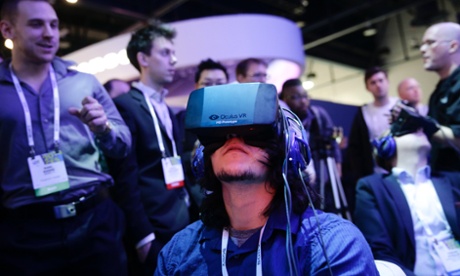
When Palmer Luckey launched his virtual reality headset, the Oculus Rift, on to crowd-funding site Kickstarter in August 2012, he probably had little idea of the impact the device would make. Reaching its modest $250,000 goal in a matter of hours, the head-mounted display (HMD) went on to raise almost $2.5m and since then, two rounds of VC funding have added an extra $90m. Now thousands of developers all over the world are working on applications for the unit. There’s just one problem: Luckey’s company Oculus VR is running out of parts.
In a short post on Reddit earlier this week, a company insider announced that shipping of the development kits, which include an early version of the Oculus Rift headset, would probably need to be suspended. Although the unit is still unavailable to consumers, the special developer version, aimed at companies wanting to design VR games and applications, has sold over 50,000 units worldwide. “Certain components [...] are no longer being manufactured,” the anonymous source admitted, “meaning they are no longer available to us for production. As a result, we don’t have the necessary materials to produce additional kits.” Apparently, Oculus is now looking into sourcing alternative components but has no timeframe on that. The plan is to keep selling the kits for as long as possible in the key territories, but then to suspend sales. The post ends, “we never expected to sell so many development kits.”
Tablet tech
It’s likely the problem stems from changes in the mobile computing and smartphone sectors. Oculus has been able to keep costs low by sourcing components that are primarily manufactured for tablets and phones – but as these devices evolve, key parts are abandoned in favour of newer tech. “The most likely component to run out would be the display,” says James Parker of Bristol developer Opposable Games, which is working with the Oculus technology. “Display tech moves on so quickly these days that it’s quite possible that they can no longer get a display of that specific size and that resolution if the big mobile manufacturers no longer need it.” Indeed, the current Oculus Rift dev kit uses a seven-inch LCD screen at a time in which many larger smartphones and phablets are moving to eight-inch and beyond.
Parker, though, thinks the problems could be more to do with future plans rather than current sourcing problems. “I think any custom hardware manufacturer worth its salt would anticipate the issues, and Oculus seems to have done a fairly good job of handling supply up until now, considering how new the tech and the company is. Speculation is that they’re only running out because they’re ramping up for a consumer release in the very near future, but that’s probably just the the internet talking.”
Dev Kit 2
The company has, however, announced that a second developer kit is due out soon. John Carmack, the legendary games programmer who developed the likes of Doom and Quake, became Oculus VR’s chief technical officer last year and he promised that better dev kits would arrive before the consumer launch. The specifications haven’t been released, but the industry is speculating with keen interest. Si Stratton at Swansea-based studio Mr Dog, currently working on several Oculus Rift projects states: “We don’t know for sure, but there are rumours of a better resolution display – perhaps 1080p AMOLED – as well as a low-persistence display mode to eliminate ghosting, G-Sync-like dynamic refresh rates and true positional tracking with a camera – effectively as close as possible in spec to the Crystal Cove headset Oculus displayed at CES. Audio - especially positional audio - incorporated into the rift would be useful for us, but I don’t know if they have any plans to go down this route. We have no idea on the DK2 release date, but there’s rumours of Summer 2014.”
Oculus Rift is the first in a new era of virtual reality headsets, promising to revolutionalise gaming and screened entertainment in the coming years. Viewers put on the headset and then view the virtual environment through two screens showing offset versions, thereby providing an immersive three-dimensional effect. Motion technology in the HMD also tracks the player’s head movements and relates these to the onscreen action so users can look around the world. Dozens of PC games are set to support the consumer version of the Oculus Rift when it releases, but medical and academic researchers are also working with the technology, which has never been this cheap or easy to employ before.
Oculus VR certainly won’t want component shortages to delay its consumer launch, which is still hasn’t been announced but could be later this year. Interesting competitors, including the Avegant Glyph, are also being produced, while the big console manufacturers are exploring similar concepts; Sony has teased a virtual reality HMD for the PlayStation 4. The Rift has caught the imagination of developers, but with appetite for the technology growing, momentum will be vital. A virtual battlefield awaits.
• Oculus Rift: Valve promises to take virtual reality to the masses

